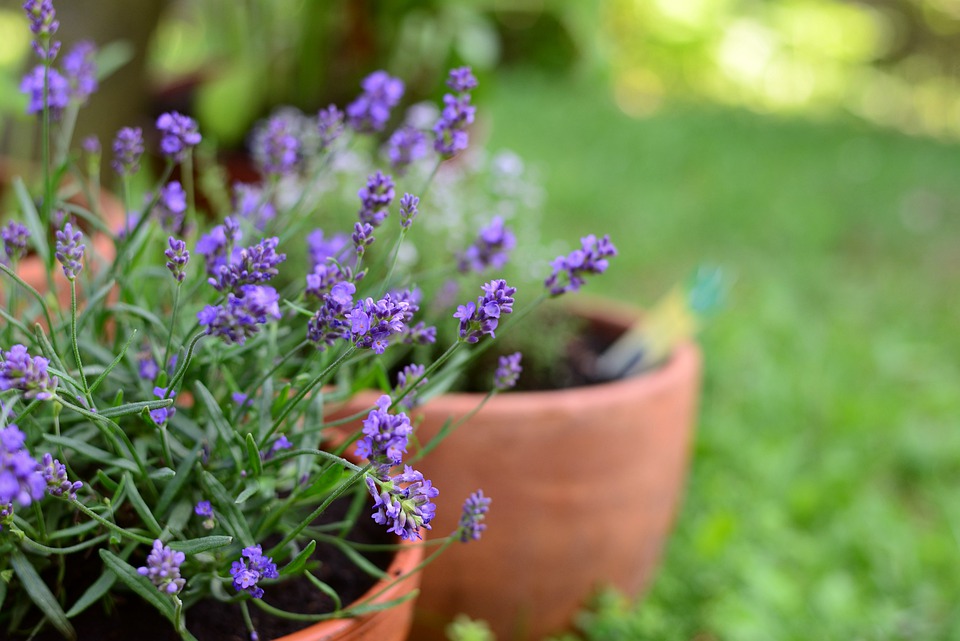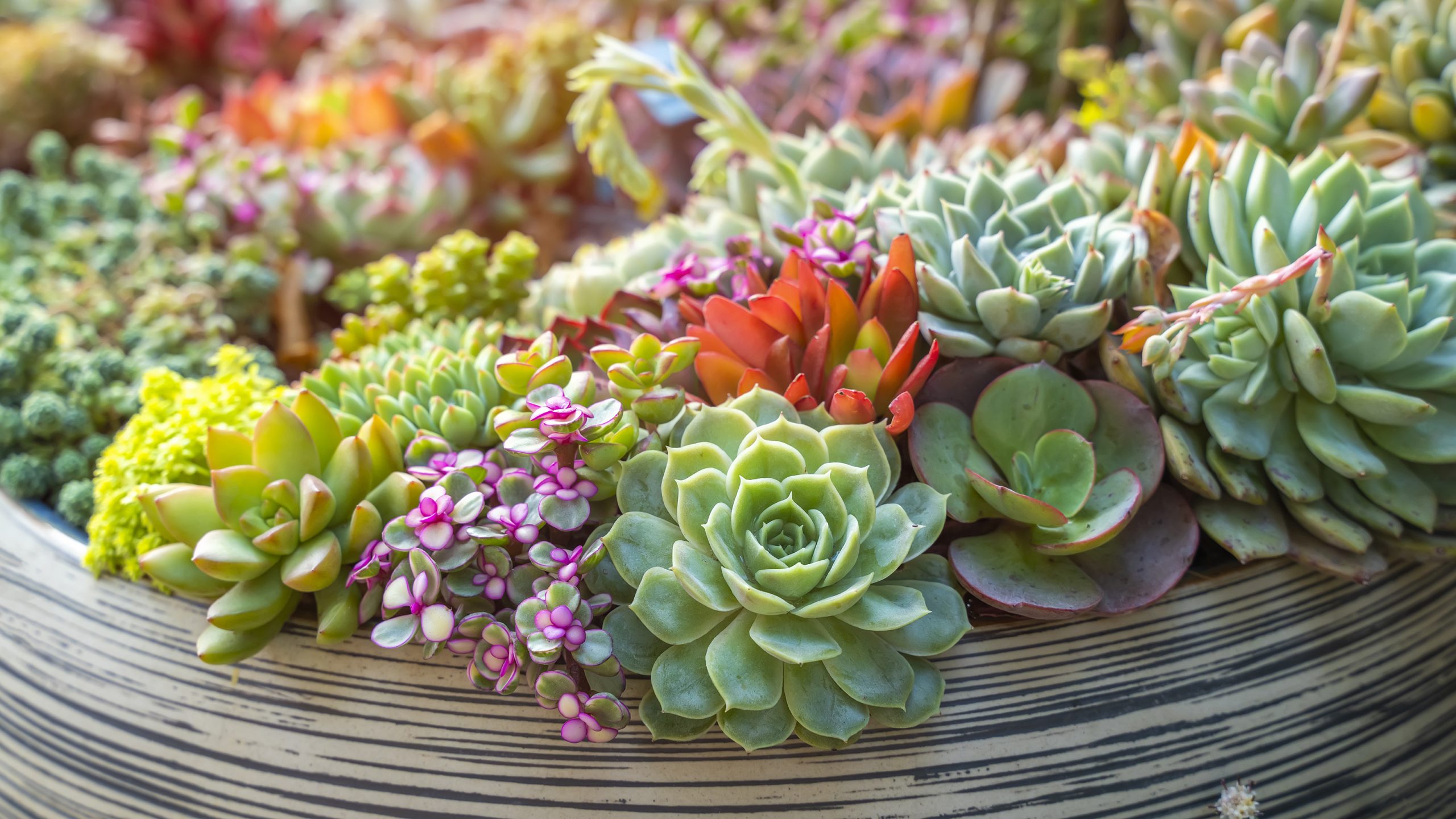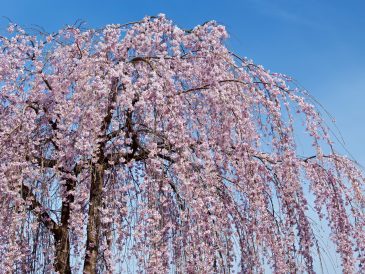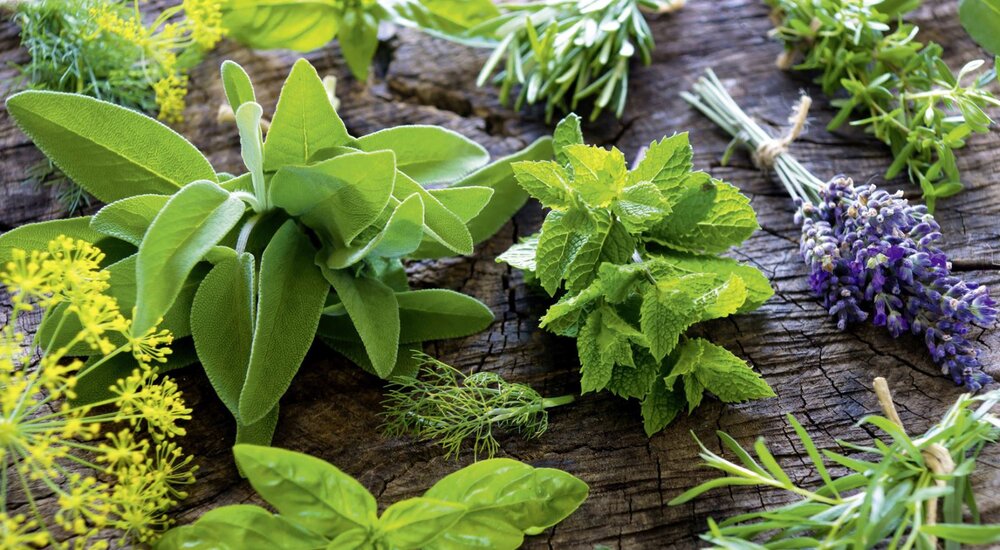A potted lavender plant can be a pleasant companion in any home. The scent is relaxing, the subtle shade of purple boosts the atmosphere, and just the fact that it is a houseplant gives the room a fresh and natural feel.
However, a potted lavender plant requires meticulous care. It’s a bit more complex than other plants, but thanks to its unique charm, you’ll soon forget that it needs more attention.
Below are some tips on what you need to do to grow the most beautiful lavender in pots and use it as a natural interior decoration for your home!
How To Grow Lavender in a Pot?
Finding a Suitable Pot
The first thing you need to do is find a suitable plant pot. Lavender is more rebellious and wants to grow its roots as far as possible. So,
avoid putting it in a small flower pot, no matter how much you like that pot and how pretty it looks. Also, they don’t like moisture, so never put them in a flowerpot without drainage holes.
Instead, choose a flowerpot that is a few centimeters larger than the size of the roots, has a wide and tall neck, and most importantly, has a hole for draining water. If it’s made of terra cotta, it’s even better since the soil won’t stay wet for long.
Soil & Fertilizer
Prepare an all-purpose soil for lavender (preferably calcium and sand), make holes, and water well. Wait for the water to drain off and add fertilizer with as little nitrogen as possible. You are now ready to plant your lavender seedlings. Please note that it is better to grow lavender in pots from seedlings rather than seeds.
Watering & Pruning
When planting lavender in pots, you can harvest the seedlings in spring or fall if you have lavender bushes in your garden (preferably 3-5 years old). Cut five or six stems less than 10 cm from the mature plant, the part that is already woody. Carefully remove the leaves so as not to damage the new shoots, and take the cuttings in a pre-prepared container filled with sand and well-watered soil. If the cuttings are adequately watered, roots will appear in three weeks.

How to Care of a Potted Lavender Plant?
Lavender grows better freely in the garden, but in some years, depending on the conditions, it can grow very well in pots.
Place the lavender pot in the brightest spot in your house, such as the balcony, kitchen windowsill, or living room coffee table. Place the lavender pot near a south-facing window and make sure it gets at least three to four hours of direct sunlight. Lavender likes airflow (not air conditioners), so rotate the container and ventilate it frequently so that the plant can grow evenly.
Watering should only be done when the soil starts to dry out. Watering should not be too frequent, only when they let you know that they are thirsty. Leaving the plants in moist soil for a long time will cause the roots to rot. On the other hand, the lavender will turn yellow if the soil dries out completely.
In the second year of growth, you can start pruning. Cut off the inflorescences as close to the ground as possible (8 to 10 cm from the surface) to create a rich shrub.
How To Decorate a Home With Lavender?
When lavender is planted in pots and begins to bloom (usually in early summer), it is a good idea to incorporate it into your home decor.
From a potted lavender plant, you can assemble several stunning decorations on your coffee table. All you need is a high rimmed decorative tray (proportional to the size of your coffee table), two ornaments of different sizes, and, of course, a flowerpot filled with lavender.
Group the flowerpots and objects on the tray to be cohesive and arranged by color. Matching opposite shades on the color wheel create a pleasing contrast to the eye. If purple lavender is in the vase, you can add a small light purple ceramic ornament and a medium yellow statue (yellow is the complementary color to purple).
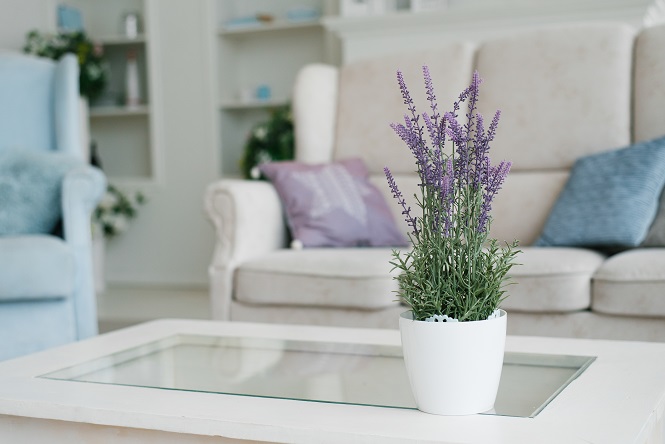
We hope you have found these tips helpful. If this charming plant is one of your favorites, don’t hesitate to incorporate it into your interior design. Just remember always to place it in a well-lit area of your home.

